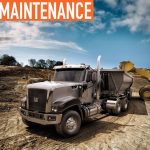While there are different materials available for the manufacturing of today’s work trucks, not all materials are cut out for the various applications that trucks endure on a daily basis. Consider the specifications of your fleet, such as payload requirements, environmental conditions, lifecycle, and the end-of-truck-life environmental impact, and the choice of material for truck production settles on three options: aluminum, steel, or fiberglass.
VALUE OF ALUMINUM
As OEM chassis production begins to lean towards the use of lighter-weight aluminum versus steel, it would make sense that truck bodies follow suit. Aluminum can benefit your fleet and the environment. Lightweight, durable, and non-toxic recyclable aluminum has become an essential element of daily life. Aluminum is often referred to as a “miracle metal,” and for good reason. By virtue of its strength and beauty, aluminum is the backbone of noteworthy vehicles worldwide. Aluminum is up to 50 percent lighter than most comparable steel and up to 10 percent lighter than composite fiberglass. Due to the use of aluminum, some truck models have shed as much as 1,000 lbs.
ALUMINUM VS STEEL
The aluminum-vs-steel, strength-vs-weight issue is one that is commonly misunderstood. It is important to recognize and understand that given the materials’ composition, there are some aluminum alloys that are stronger than some steel alloys. One of the most widely used high-strength aluminum alloys is alloy 6061 with T6 temper. Pound for pound, 6061-T6 is stronger than some steel alloys.
Strength and hardness are the keys to any work truck, as most natural environments and users demand a tough vehicle. Aluminum has great thermal conductivity, so it does not lose any strength properties in extreme, low temperatures. It will retain its original hardness when under load and when empty. Aluminum can also have a greater resistance to deformation where some steel material takes on permanent deformation with little movement.
Steel is about three times heavier than aluminum. An aluminum service body can increase fuel efficiency by 8-10 percent before driver habits. The EPA states that for every 100 lbs shed, expect up to a 2 percent increase in fuel economy. For many parts of the truck, aluminum is preferable because it is lightweight and durable. This durability extends the life span of a truck body, making the truck’s total cost of ownership valuable. In fact, an overall lighter product can have a positive impact on the general health and life span of a truck’s suspension system, powertrain, and brake system.

ALUMINUM VS FIBERGLASS
Fiberglass is often considered the “preferred” material for its light-weight characteristics. In reality, while fiberglass material offers weight-savings over steel and can improve fuel economy, it actually weighs more than aluminum because of durability requirements for work truck bodies. Like aluminum, fiberglass is also inherently corrosion resistant, unaffected by road salts or humidity content; both materials are ideal in geographic regions facing a variety of weather conditions.
In terms of repair-ability, fiberglass has flexural properties; when a collision occurs, the impact is absorbed in one spot and does not spread beyond the point of impact. Overall damage is typically limited to one area; however, fiberglass can be easily damaged by rough, repeated use and torsional stresses associated with heavy-duty driving. And while it does possess the flexural properties, fiberglass can be harder to repair and restore than aluminum or steel. Its gel coat has a tendency to fade, spider web, and chalk over time, making the matching of paint color during repair difficult.
When considering fiberglass, remember that the finished body must be attached to the chassis frame, and will require an understructure of either steel or aluminum. The understructure of a fiberglass body cannot be electrically welded, but instead requires mechanical attachment points.
Fiberglass is not environmentally friendly and uses a number of materials in its construction. While it may have a long life expectancy, at its end of life, disposal can be difficult and costly. This is contrary to aluminum, which is infinitely recyclable and consistently made from the same materials. This gives fleets a positive step in decreasing their environmental footprint.
From a design standpoint, fiberglass does not provide the smooth unobstructed exterior flow that aluminum does. Fiberglass mandates that the hardware and hinges are on the external cabinet doors, whereas aluminum allows them to be hidden. This makes aluminum an integral choice in both safety and design.
AN ECO-FRIENDLY TRUCK
“As with any major purchase, it is important to understand the job and the application for your work truck. Spending the time to spec your requirements properly will ensure you get the best product for your investment,” says Wm. Craig Bonham, vice president of business development at Reading Truck Body, a manufacturer of steel and aluminum work trucks for more 60 years.
Reading Truck Body offers service and enclosed bodies made of 100 percent recycled material. Partnering with Isuzu Commercial Trucks of America, Reading developed an aluminum service van—the Tool Pro—specially designed to fit Isuzu’s NPR ECO-MAX chassis.
Aluminum service bodies have been in production for more than 33 years. Because they are durable, strong, and inherently corrosion-resistant, you can get more from your work truck. In fact, aluminum bodies typically have a longer life expectancy. The result is a service body that is lighter on the road, lighter on your wallet, and lighter on the planet.![]()
ABOUT THE AUTHOR:
Beth Johnson is the director of marketing at Reading Truck Body. To learn more, visit www.readingbody.com.
_______________________________________________________________________
MODERN WORKTRUCK SOLUTIONS: October 2015 Issue
Did you enjoy this article?
Subscribe to the FREE Digital Edition of Modern WorkTruck Solutions magazine.
![]()




